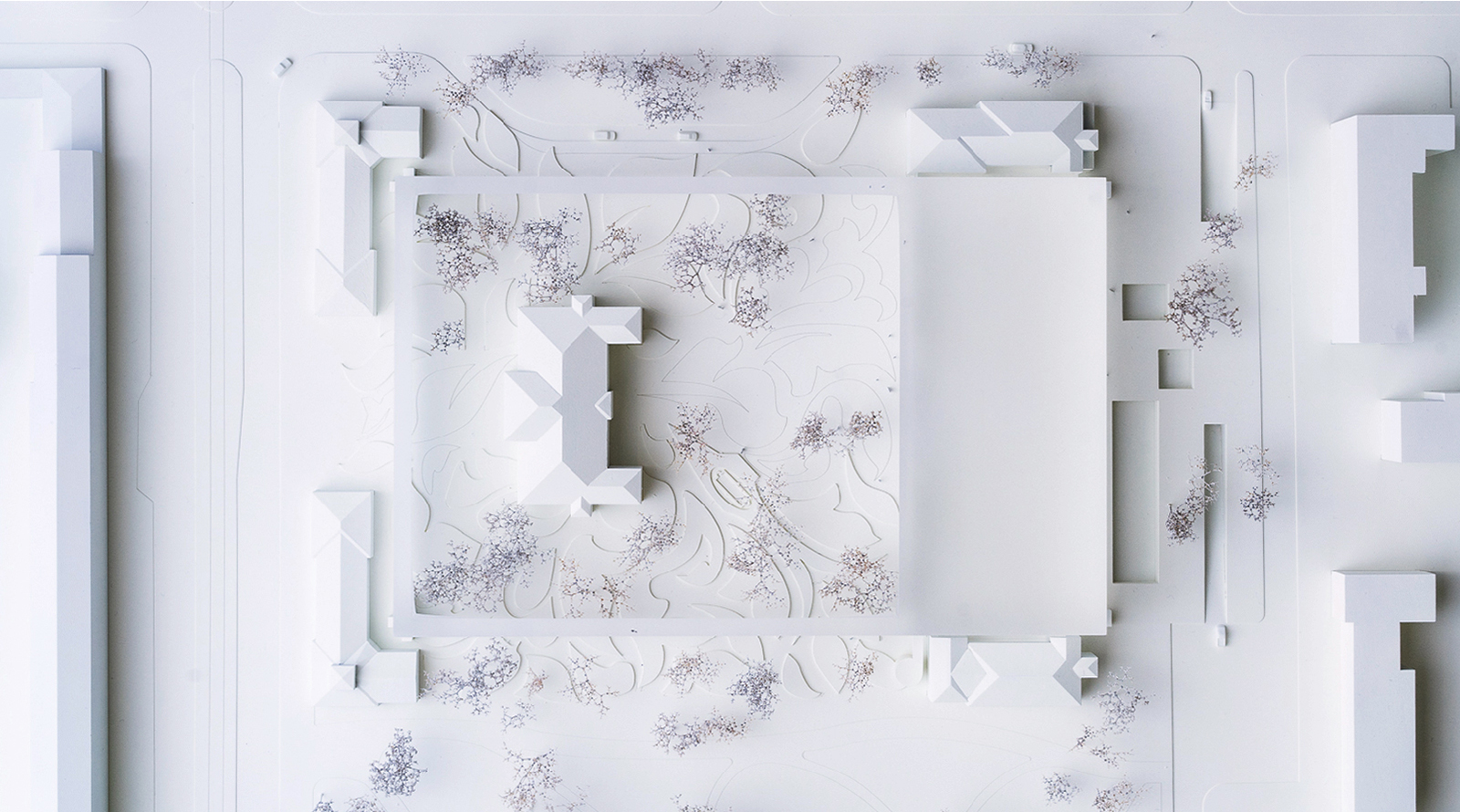
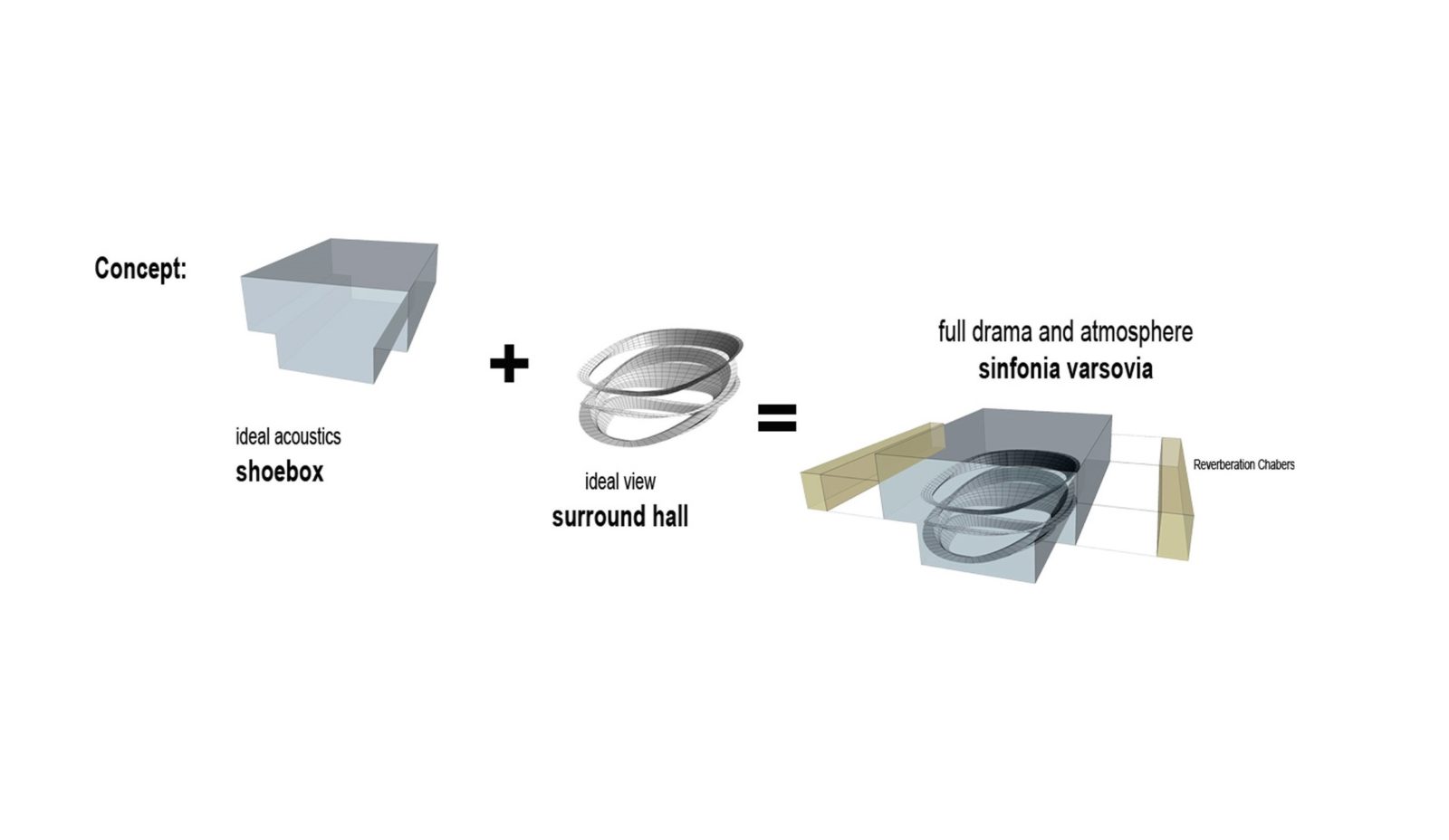
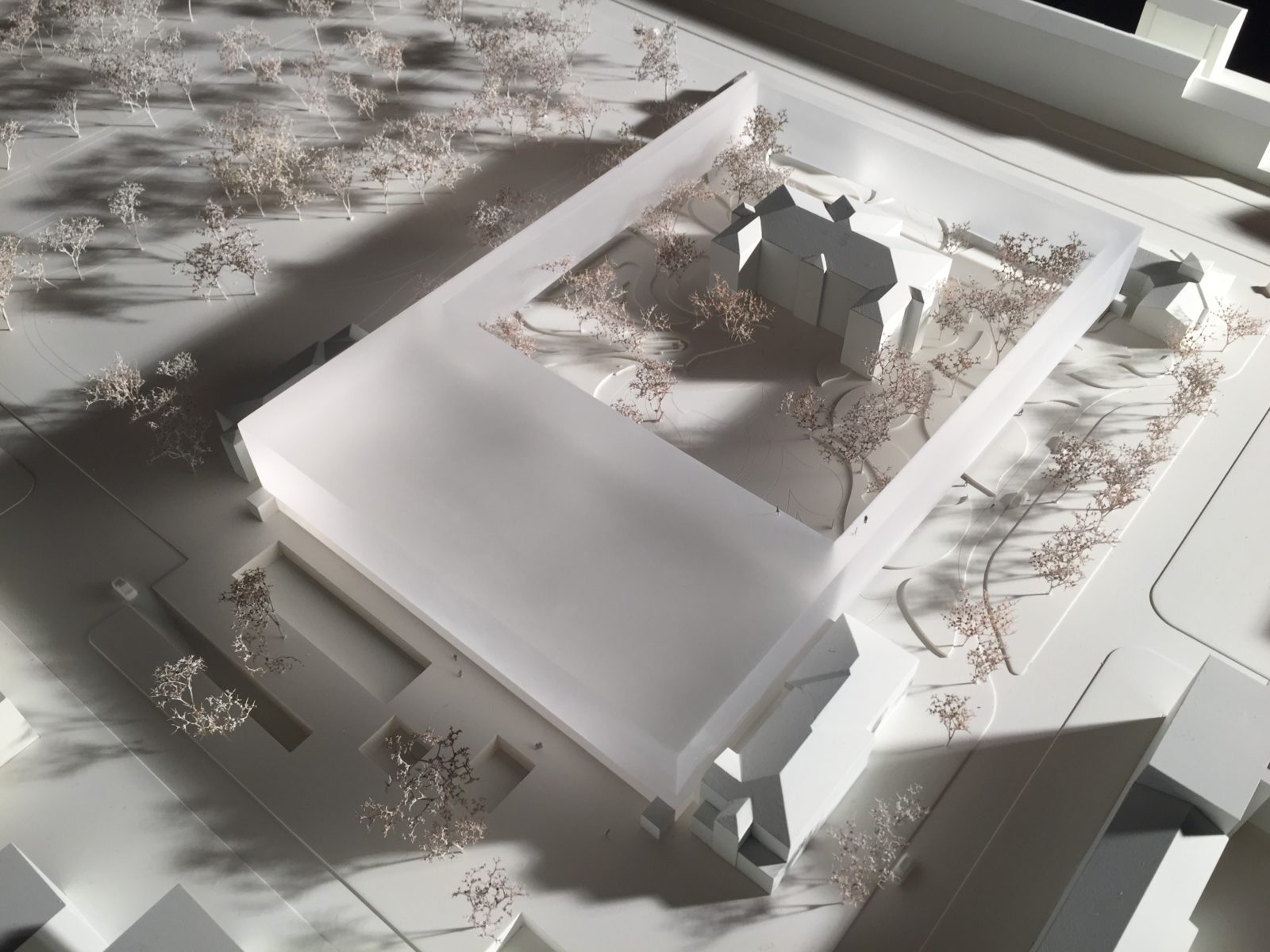
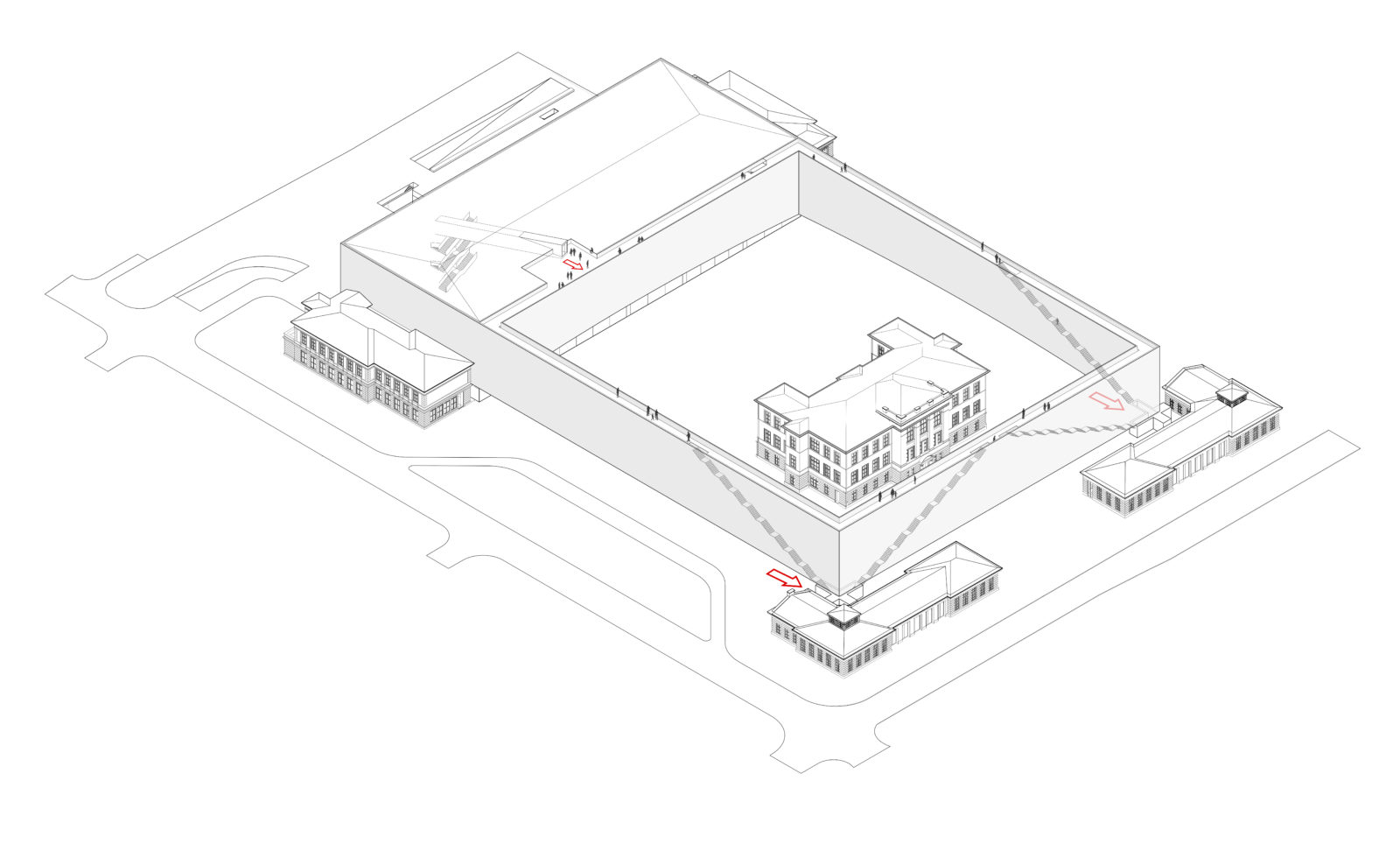
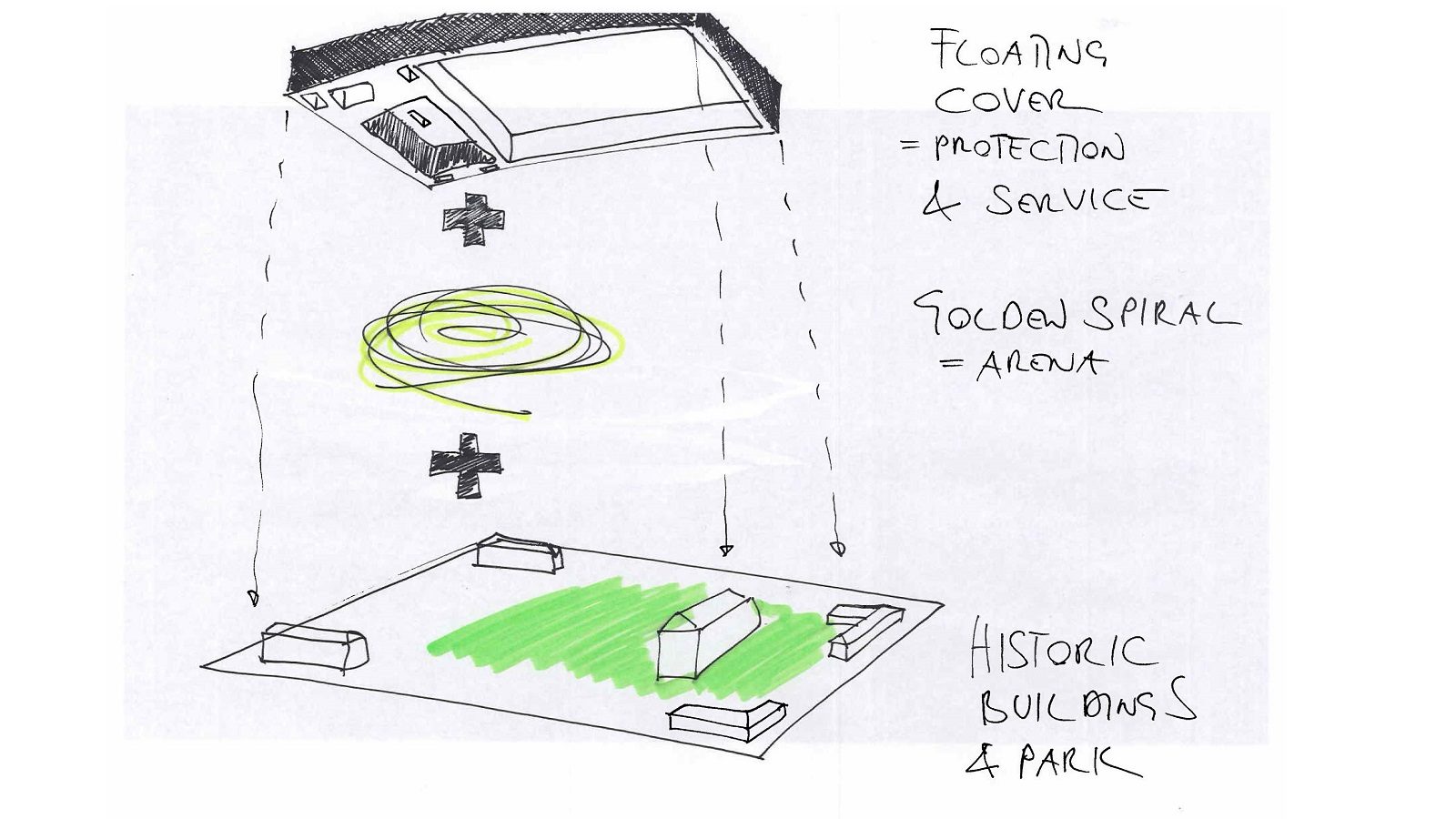
Project
1/ sale kameralne / sale prób / przestrzenie edukacyjne / rezydencje artystyczne / rama z tarasem spacerowym / kawiarnia / biura
2/ sala prób chór / szatnie / biuro obsługi widzów / toalety
3/ pomieszczenia recepcyjne i wielofunkcyjne / toalety
4/ kasy biletowe / księgarnia muzyczna / kawiarnia / przestrzenie edukacyjne i wielofunkcyjne
5/ Akademia Sinfonia Varsovia / przestrzenie edukacyjne / sala kameralna / sala prób
6/ główna sala koncertowa na 1850 miejsc / sala kameralna / studio nagraniowe / kasy biletowe / kawiarnia / garderoby i ćwiczeniówki muzyków / zaplecze techniczne
7/ rama z tarasem spacerowych
8/ ogród połączony z Parkiem Obwodu Praga AK i ul. Terespolską / fontanna
In the year 2010 an international, two-stage architectural competition was held for the design of a new concert hall for more than 1800 seats together with the architectural development of the property at 272 Grochowska Street. From among the 138 submitted entries, the jury of the competition selected the entry submitted by Atelier Thomas Pucher from Graz. In 2015, in the presence of Hanna Gronkiewicz-Waltz, President of the Capital City of Warsaw, architect Thomas Pucher and Director of the Sinfonia Varsovia Janusz Marynowski signed a contract for the development of design documentation. Design work was completed in April 2021. Schedule for construction works to start in the second half of 2022. Completion of the first stage of construction works and opening of the three front buildings from Grochowska Street will take place in 2025. Completion of the second stage of construction works and opening of the concert hall is planned for the end of 2029.
The objective of the project is to create a new cultural centre for the city of Warsaw, centred around the Sinfonia Varsovia. The centre is intended not only to be an attractive location for the presentation of classical music and other arts, but also a place to spend free time. The fundamental premises of the project also entail the renovation and adaptation of 5 historical buildings of the former Veterinary Institute for the performance of new functions, the construction of the largest concert hall in Poland (1877 seats, comprising a creative integration of shoebox and vineyard designs) together with the creation of a garden and its connection with the park adjacent to the centre. A spectacular “suspended” lattice frame suspended 3 metres above the ground with stairs hidden inside, leading to a terrace at its top forms an integral part of the design.
This is a fascinating, very powerful project. By combining the shoebox and surround designs, Thomas Pucher has achieved a one-of-a-kind concert hall. Rows of seats weave around the hall like ribbons, touching here and there. This makes the orchestra perfectly visible from every seat in the house. This solution achieves the effect of “being in the middle of the music” with flawless acoustics. Every listener in the hall will hear truly high-quality sound.
Eckhard Kahle


Place
The Sinfonia Varsovia Orchestra found its own home only in 2010 – the former Veterinary Institute in the historic Kamionek district of Praga Południe, a major district of Warsaw. The property is outlined by Grochowska and Terespolska streets, and to the east lies the Obwodu Praga Armii Krajowej Park. The history of Kamionek, formerly referred to as the hamlet of Kamion harks back to the Middle Ages. It became a part of Warsaw only in 1889.
The Sinfonia Varsovia found its own home only in 2010 – the former Veterinary Institute in the historic Kamionek district of Praga Południe, a major district of Warsaw. The property is outlined by Grochowska and Terespolska streets, and to the east lies the Obwodu Praga Armii Krajowej Park. The history of Kamionek, formerly referred to as the hamlet of Kamion harks back to the Middle Ages. It became a part of Warsaw only in 1889.
The complex of the former Veterinary Institute was built in 1899-1900 in accordance with an historicizing, neo-renaissance design by Vladimir Pokrovsky. Five of the oldest buildings are on the historical heritage register. In the centre of the complex lies the largest, most imposing building. Immediately beyond it, to the north-east, lies the park. The corners of the complex are occupied by single-story pavilions (facing Grochowska Street). There are also two two-story Annexes towards the back of the area. This palace-like layout with a clearly delineated axis is one of its fundamental merits and a major reason for placement on the historical heritage register. The remaining buildings were erected after 1925. They are currently used as office and technical facilities.


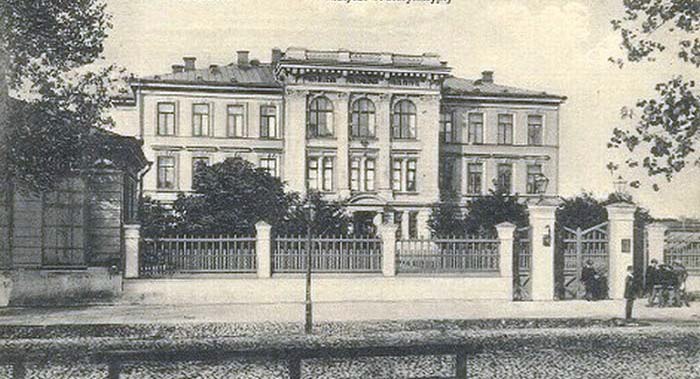
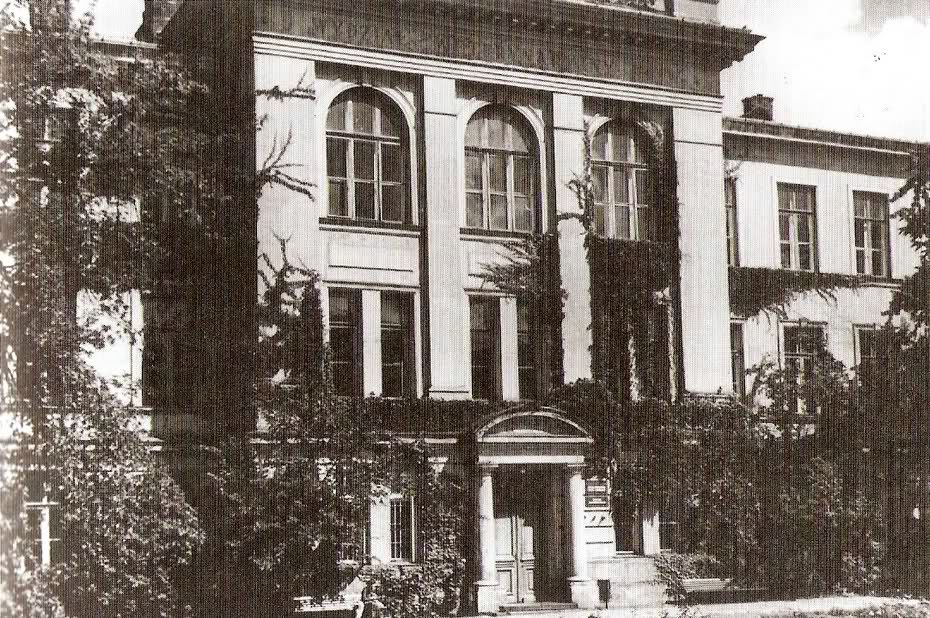
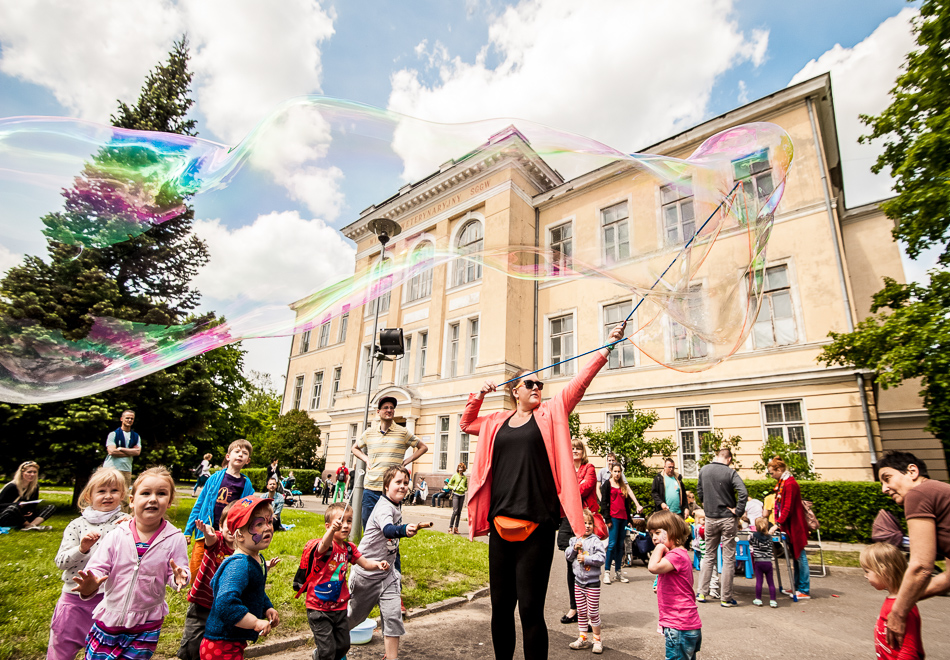
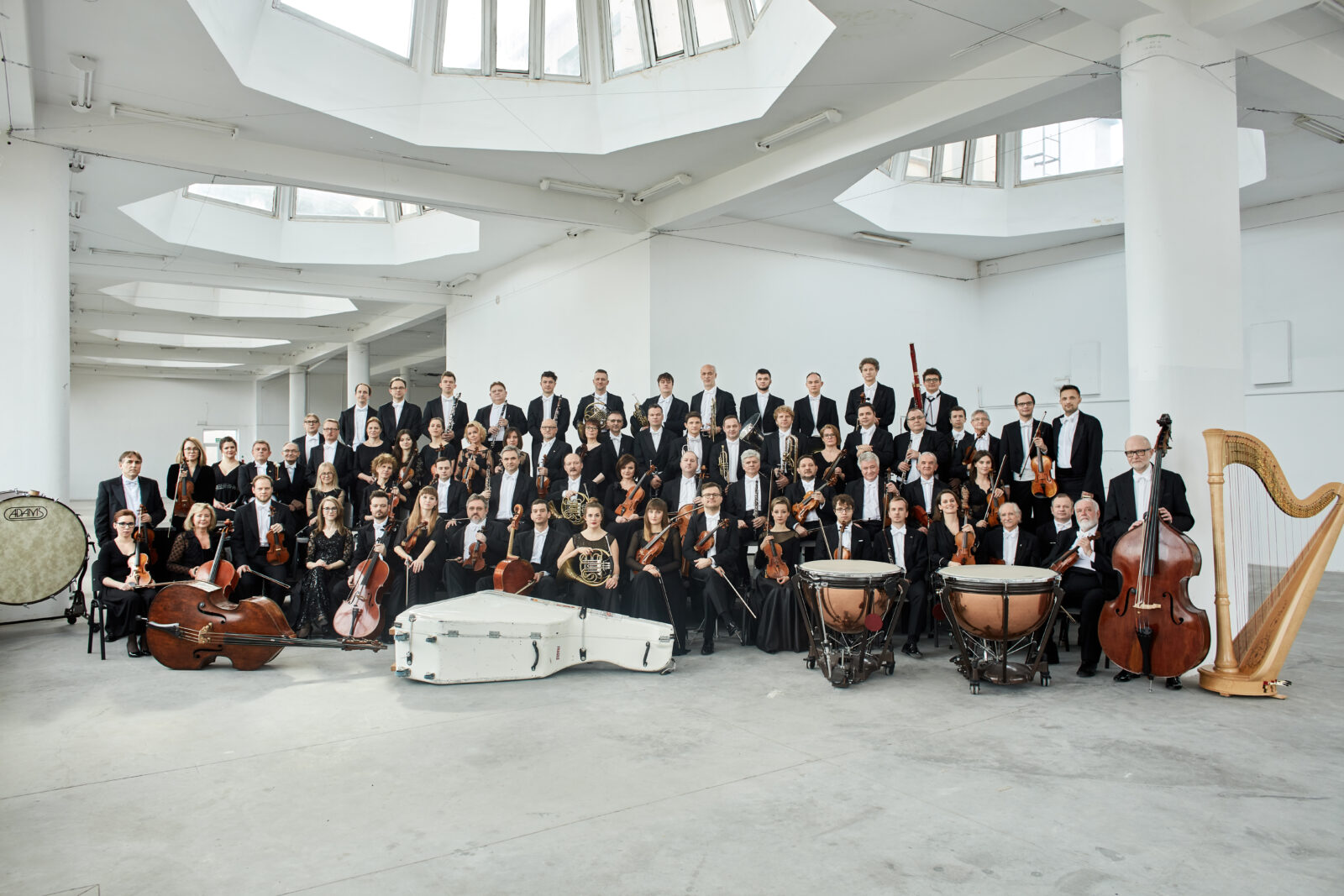

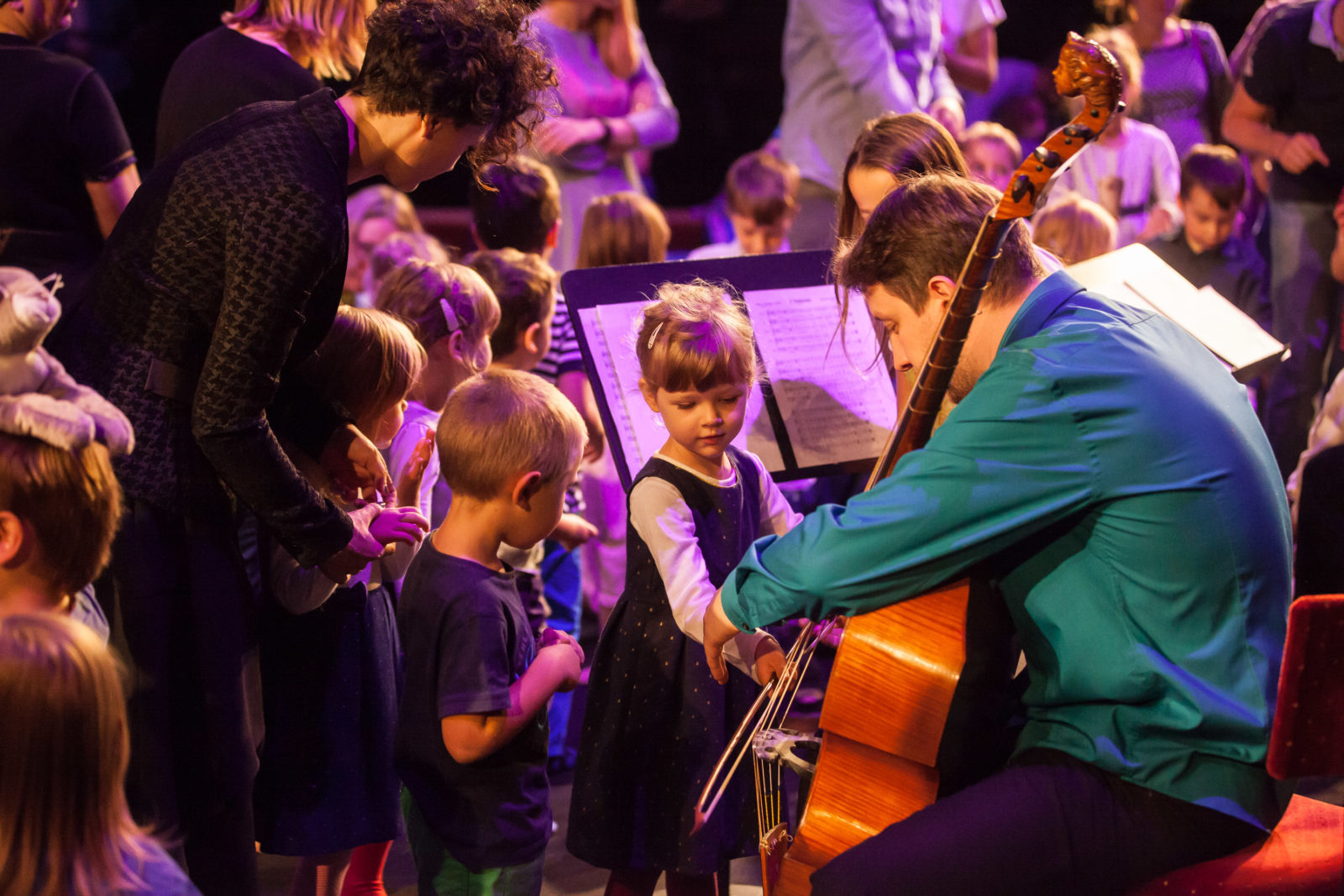
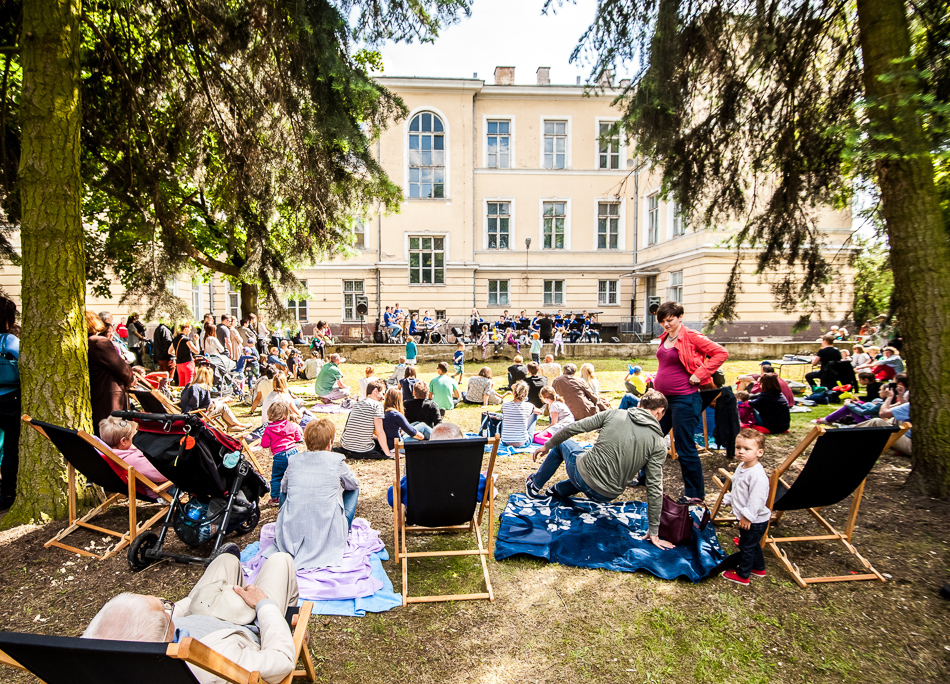
Institution
Sinfonia Varsovia jest ambasadorką polskiej kultury muzycznej od początków swojego istnienia. Orkiestra od 40 lat stale gości na zagranicznych i krajowych estradach. Jej zagraniczne podróże to tysiące spotkań z dyrygentami, kompozytorami, solistami, wreszcie – publicznością.
Sinfonia Varsovia has been an ambassador of Polish musical culture since its inception. Its international travels include thousands of meetings with conductors, composers, soloists, and finally – audiences. For nearly 40 years, the Orchestra has been a regular guest on foreign and domestic stages, providing listeners with an unforgettable musical experience.
The ensemble continues the tradition of the Polish Chamber Orchestra (PCO) founded in 1972 from which it evolved as new members came on. The impulse for expansion was provided in 1984 by the arrival of the legendary violinist Yehudi Menuhin who took over as the first guest conductor. “Working with no other orchestra gave me as much satisfaction as my work, as soloist and conductor, with Sinfonia Varsovia”, he said in interviews.
Soon after Sinfonia Varsovia began its world tour, performing in the world’s most prestigious concert halls such as Carnegie Hall (New York), Théâtre des Champs-Elysées (Paris), Barbican Centre (London), Wiener Musikverein (Vienna), Teatro Colón (Buenos Aires), Suntory Hall (Tokyo) and Herkulessaal (Munich). The Orchestra has performed under the baton of such conductors as Claudio Abbado, Witold Lutosławski, Lorin Maazel, Emmanuel Krivine, Jerzy Maksymiuk, and Krzysztof Penderecki (who served as musical director and afterwards the artistic director of the Orchestra between 1997 and 2020), as well as with soloists including Mstislav Rostropovich, Anne-Sophie Mutter, Alfred Brendel, Martha Argerich, and Piotr Anderszewski.
Sinfonia Varsovia has played over 4,000 concerts all over the world and made over 300 records, including for Decca, Deutsche Grammophon, Naxos, Sony, and Warner. The recorded repertoire includes works from the 18th century to the present day. A special place in the Orchestra’s concert program is occupied by the works of Polish composers, such as Chopin, Penderecki, Paderewski, Lutosławski, Górecki, and Kilar. The Orchestra has premiered numerous works, including those by Henryk Mikołaj Górecki, Paweł Mykietyn, and Krzysztof Penderecki.

